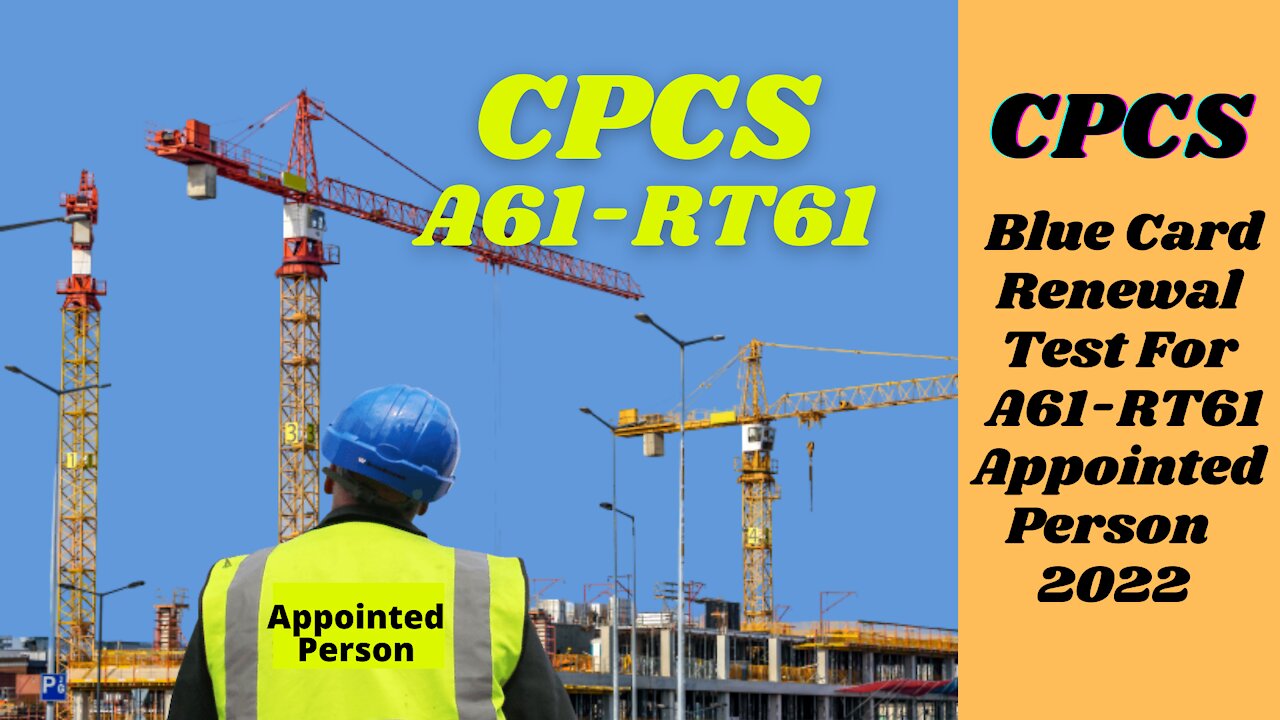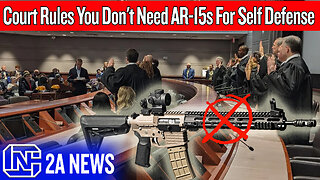Premium Only Content

Free CPCS Blue Card Renewal Test For A61 - RT61 Appointed Person. 2022
The CPCS blue card renewal test for A61 - RT61 appointed person is an important step in the process towards maintaining the skills, knowledge, and competency of the cardholder. Prior to taking the test, cardholders are advised to carefully study both the supporting information and the revision material known as the factsheet and the video, which will prepare you in deciding the correct answer or answers to each given question.
The role or duties of the Appointed Person (AP) or lift planner are described within codes of practice such as LOLER 1998. Other guidance such as BS 7121 identifies the responsibilities, attributes, and requirements of the role, and what should be taken into account when the planning of lifting operations is undertaken.
The Appointed Person remains responsible for the execution and safety of the lifting operation although may delegate other duties, although not the responsibility, to other persons such as the LE (Lifting Equipment)/crane or lifting operations supervisor.
For a lifting operation to be carried out efficiently and without incident, the Appointed Person needs to seek, analyze, calculate and specify a procedure and detail the method of executing a lifting operation or operations whilst conforming to both good practice and regulatory requirements. They are further expected to relay the information in a clear and coherent manner to the members of the lifting team, via relevant documentation and other forms of instruction. Investigations of lifting operations incidents have shown that a lack of effective planning is the main cause.
The aim of this factsheet and the video is to highlight issues that have occurred with lifting operations within the construction and allied sectors, of which the Appointed Person should be aware. It further aims to reiterate some of the areas of responsibility for an Appointed Person and what they may need to take into account when planning lifting operations.
A lift plan is normally constructed that, in principle, includes the risk assessment for the operation, a method statement outlining how the risks should be controlled, identification of personnel required, the technical data relating to the lifting equipment, crane, loads, accessories, and working area, the sequence of operations and actions to be taken in an emergency or where alternative arrangements need to be made.
The Appointed Person needs to consider and stipulate the competencies and skills required based on the required role, and the number and type of personnel needed for each part of a lifting operation. For example, the Appointed Person needs to consider and specify that the chosen slinger or signaller has sufficient knowledge of the attaching procedures where specialist lifting accessories are being used.
The Appointed Person also needs to ensure that the chosen lifting equipment/crane supervisor is able to give clear instructions to other members of the lifting team, especially if the Appointed Person is not present at the lift. Although the lift plan specifies skills and competencies, it would not normally need to define the fitness levels of an individual – this would be an employer issue.
In certain circumstances, the slinger or signaller role may be divided amongst various members of the lifting team, each having a defined task. For example, a slinger may connect the load but several signallers may guide it along a travel route if the load is complex, or where specialist lifting equipment is being used.
To minimize any incidents such as trapped limbs, the lift plan needs to ensure that the slinger directs initial movements to the lifting equipment/crane operator whilst the load is being slung, before handing control over to the designated signaller.
The Appointed Person must consider environmental aspects, such as a change in the weather, which can affect the lifting operation in terms of load control, visibility, and ground support. Exposure of the lifting team to poor or extreme weather is another factor to consider.
When specifying the positioning of a lifting equipment/crane, other nearby lifting equipment/cranes need to be taken into account. On sites where there are several tower lifting equipment/cranes working in near proximity to each other, the Appointed Person needs to ensure that the paths of each lifting equipment/crane’s radius do not overlap. If this is not possible, other considerations such as different jib heights or motion limiters need to be considered.
Lifting Equipment/cranes sometimes need to be positioned within confined areas where there is restricted room, particularly when they are smaller lifting equipment/cranes or lifting-type plants such as 360 excavators.
Please Don't Forget To Like, Share, Comment, And Subscribe To Support This Channel
Thank you for watching and GOOD LUCK FOR YOUR TEST.
-
 LIVE
LIVE
StuffCentral
2 hours agoI'm baaack (no you can't play with me.. unless you a healer)
76 watching -
 2:25:11
2:25:11
TheSaltyCracker
4 hours agoTrump Is Not Dead ReEEeStream 8-31-25
60.8K89 -
 LIVE
LIVE
THOUGHTCAST With Jeff D.
2 hours agoLabor Day Weekend FORTNITE With THOUGHTCAST Jeff & the squad
130 watching -
 3:44:05
3:44:05
Rallied
5 hours ago $0.26 earnedSolo Challenges All Day
34.7K1 -
 LIVE
LIVE
iCheapshot
5 hours ago $0.03 earnedCall of Duty: Black Ops Campaign
37 watching -
 4:39:16
4:39:16
Meisters of Madness
6 hours agoMadness in a Pod
5.18K1 -
 1:25:44
1:25:44
HELMETFIRE
2 hours ago🟢GAMING WITH FIRE EP9🟢
5.9K -
 1:24:08
1:24:08
Jean-Claude@BeyondMystic
14 hours ago🌀 THE WACKY WOO SHOW 3I ATLAS ALIEN INVASION with DICK ALLGIRE & JC - AUG 31 , 20254
42.8K55 -
 2:26:21
2:26:21
vivafrei
13 hours agoEp. 279: Patel's GF Sues for Defamation! Rogue Judges vs. Trump! Raja Jackson, Kick Stream & MORE!
140K80 -
 18:52
18:52
Colion Noir
10 hours agoCourt Rules You Don't Need AR-15s For Self Defense, Mayor's Message If You Love Kids Ban AR-15s
28.8K80